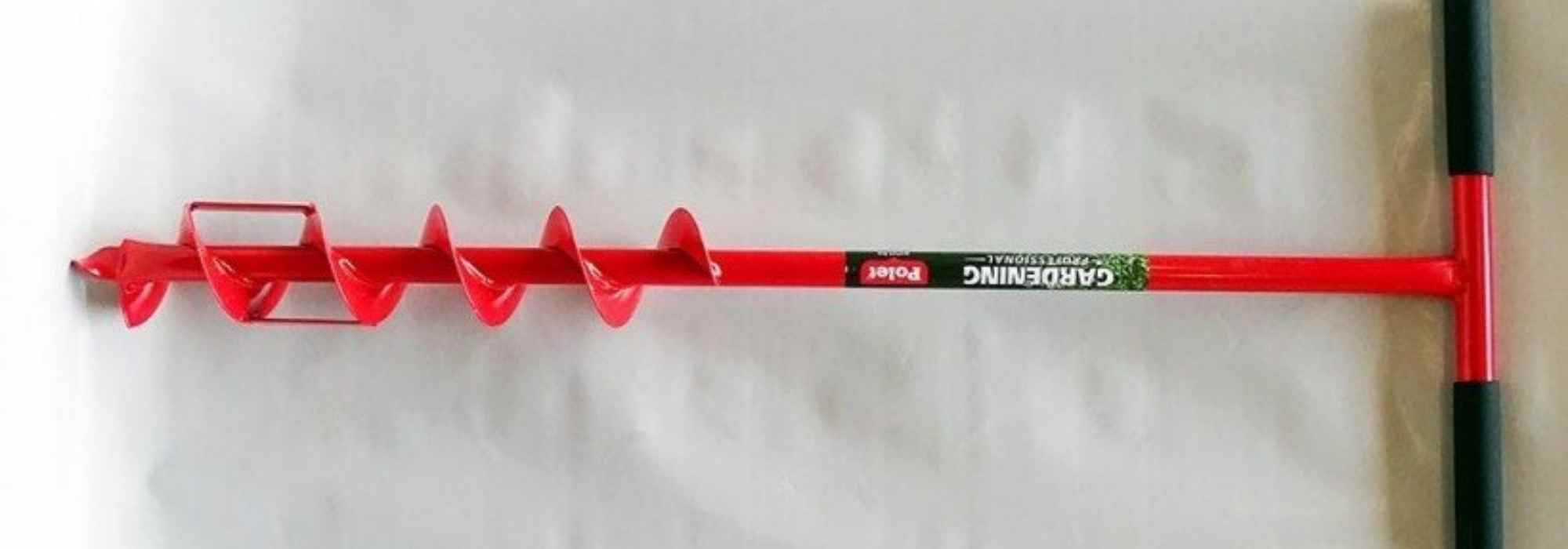
Une vrille à vis d'Archimède est un dispositif utilisé pour élever des liquides ou des matériaux en vrac. Elle fonctionne sur le principe de la vis, où un mouvement rotatif permet de déplacer le contenu le long d'un tube incliné. Ce mécanisme est particulièrement efficace pour pomper de l'eau, irriguer des cultures ou transporter des matériaux dans des applications agricoles et industrielles.
Little holes... Little holes... always little holes...
Contents
An Archimedes screw or manual auger is a tool that is rarely found in our gardens. However, it is a gardening tool, useful for replanting or managing natural areas particularly effective in certain difficult-to-dig soils: very compact, clayey, or heavily stony. The screw can dig narrow and sometimes very deep holes (up to over a metre) allowing for the subsequent placement of posts, stakes, as well as small perennials, bulbs, or very young bushes. Tired of breaking your back with a pickaxe in stony ground? Adopt an Archimedes screw for your plantings!
Une vrille à vis d'Archimède est un dispositif mécanique utilisé pour déplacer des fluides, généralement de l'eau, d'un niveau bas à un niveau plus élevé. Elle se compose d'une vis hélicoïdale enroulée autour d'un axe central. Lorsque l'axe est tourné, la vis entraîne le fluide le long de son hélice, permettant ainsi de le pomper efficacement. Ce mécanisme est souvent utilisé dans l'irrigation, le drainage et diverses applications industrielles.
An Archimedes screw auger is a manual auger consisting of a “T” handle for manipulation during digging and an Archimedes screw, which is a set of spirals placed on an axis. An auger must be made from a tough steel.
An auger or manual auger is designed to create holes of a certain diameter and to a considerable depth (sometimes over a metre!). These holes will be used for planting fence posts, as well as for planting perennials, bulbs, or small bushes, particularly in bare roots.
Archimedes screw augers are particularly resistant to wear, making them suitable for frequent use, especially in gardens with difficult soils such as stony soils.
The 90 mm Archimedes screw auger model from Polet is equipped with a more robust Archimedes screw, even better suited for hard or stony soils than standard models. The unique shape of its spirals allows for easier lifting of coarse materials: soil, small stones… This model is made of bright red lacquered carbon steel and features a comfortable 45 cm “T” handle. The total length of the auger is 106 cm.
A quick physics reminder: an Archimedes screw, sometimes incorrectly referred to as a “endless screw“, is a device that allows for the movement of liquids (water, wastewater, muddy water…) or “fluid” solids (powder, grain…) through spirals rotating on an axis. An Archimedes screw is therefore more akin to a type of helix, contrary to what its name suggests. The invention is attributed to Archimedes, although some authors claim the idea is older. But let’s not quibble over a few hundred years…

Model of the 90 mm Archimedes screw auger from Polet
Read also
What is a scraper used for?How to use an Archimedes' screw?
Tendrils are manual augers used to create small planting holes in difficult-to-dig soils such as clay, very compact, or hard and stony soils. This tool allows you to work without (too much) fatigue and, most importantly, without injury.
- Grip the tendril with both hands on the handles;
- Twist the auger while pushing it into the soil like a giant screw;
- Keep turning the tool until the hole is deep enough;
- Remove the tendril by simply lifting it by the “T”: the soil will be “trapped” in the spirals and will thus be extracted;
- The hole is made! You can plant your stake or your plant.
- Subscribe!
- Contents
































Comments